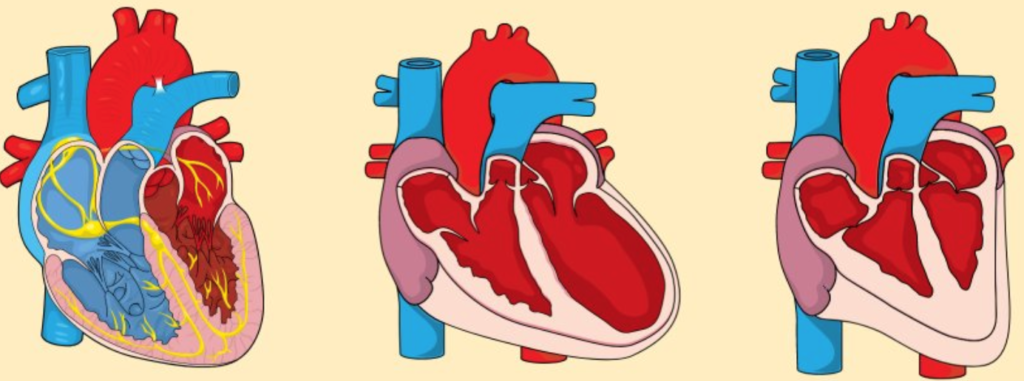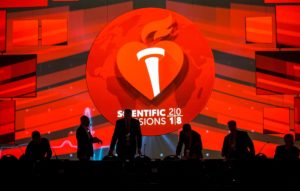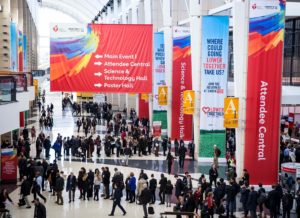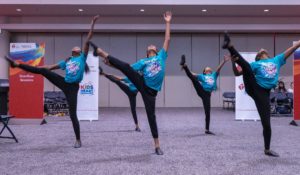The Unexpected Benefits of Extending Your Training
During my general cardiology fellowship, I developed a special interest in the care of patients with inherited cardiovascular disease. By virtue of the robust clinical activity of my division’s advanced heart failure and electrophysiology programs, I was exposed to clinical dilemmas like risk stratification in hypertrophic cardiomyopathy, primary prevention of sudden cardiac death in lamin A/C cardiomyopathy, and timing of heart transplantation for Danon disease early in my training. Refreshing my knowledge of clinical genetics alone was overwhelming, and I realized that while the rapid growth in genomic technologies was transforming our understanding of inherited cardiovascular disease, frontline clinicians were lagging behind in applying this knowledge to disease prevention and clinical care. To cultivate my interests further and learn to bridge this gap, I joined my institution’s new National Human Genome Research Institute (NHGRI)-supported postdoctoral training program in genomic medicine, a program created to prepare the next generation of physicians and scientists to implement genomic approaches to improve healthcare.

For M.D./D.O. trainees who have spent six consecutive years entrenched in clinical residency and fellowship programs, the idea of extending training by two years, re-entering the world of formal coursework and letter grades, and learning new skills to perform complex and unfamiliar research is more than enough to deter one from pursuing this career development track. However, participating in this program has afforded me many unexpected benefits outside the bounds of my clinical and research training:
- Caring for patients with a new type of multidisciplinary team:
- During my clinical training, my idea of a multidisciplinary care team was mostly grounded in my inpatient experience. While cooperating toward the same goal, physicians, nurses, advanced practice providers, therapists, nutritionists, pharmacists, social and case management workers often performed their roles asynchronously with little collaboration outside of the prescribed morning rounds. In contrast, my experience in our inherited cardiovascular disease clinic introduced me to a new paradigm essential to caring for patients and families with genetic disorders. I have been fortunate to learn about variant adjudication, pre-test and post-test counseling, cascade screening, and much more from our tremendous genetic counselors who are integral in the outpatient evaluations of our probands.
- Though the initial years of my practice have been focused in adult medicine, I have learned about the importance of tracking variant segregation in families and of comprehensive transitions of care through our joint familial cardiomyopathy and arrhythmia programs, partnerships with our neighboring pediatric hospital.
- Finally, I have witnessed the potential of real time bedside-to-bench-to-bedside research collaborations as shown by my mentors in their recent report of a clinical incorporation of rapid functional annotation of cardiomyopathy gene variants.1
- Developing and sharing expertise:
- In leading my fellowship’s didactic education curriculum as Chief Fellow, I took advantage of opportunities to share my new knowledge and skills with other fellows and residents. For our “fresh case” presentations, I often chose to present perplexing cases of cardiomyopathy to reinforce teaching points regarding the workup of genetic cardiomyopathies and the importance of taking a minimum three-generation family history.
- After completing the Examination of Special Competence in Adult Echocardiography, I led a fellow teaching conference on echocardiography in hypertrophic cardiomyopathy. I also joined our internal medicine residents for a clinicopathologic conference as an expert discussant, a position usually reserved for faculty but generously offered to me given my interest in cardiovascular genetics and enthusiasm for teaching.
- Pursuing these opportunities to develop and share my expertise has helped me solidify my own knowledge in the field, develop my oral and written communication skills, and grow as a peer mentor.
- Meeting physicians and scientists outside of cardiovascular medicine:
- The world often feels quite small while training within a medical specialty, but through my postdoctoral program, I have been exposed to physicians, scientists, and trainees in many disciplines outside of cardiovascular medicine. I heard diverse perspectives in my bioinformatics, biostatistics, and bioethics courses that have encouraged me develop my own independent opinions about my fields of interest. Multidisciplinary forums like genetics journal clubs, genetic rounds, and campus retreats have helped me contextualize the practice of genomic medicine.

My time in the postdoctoral program has shown me that these unexpected benefits of training are highly valuable to a trainee’s success. Through the genomic medicine postdoctoral program, the NHGRI “hopes to bring cross-training opportunities to individuals at different career levels and to support the training of investigators working in both basic genome science and genomic medicine” as it recognizes that this “is essential to realizing the full potential of genomics.”2
References:
- Lv W, Qiao L, Petrenko N, Li W, Owens AT, McDermott-Roe C, Musunuru K. Functional Annotation of TNNT2 Variants of Uncertain Significance With Genome-Edited Cardiomyocytes. Circulation. 2018;138(24):2852-2854.
- Green, Eric D. “NHGRI’s Research Training and Career Development: Genome Science to Genomic Medicine.” National Human Genome Research Institute. 3 Sept. 2014. https://www.genome.gov/27557674/may-5-nhgris-research-training-and-career-development-genome-science-to-genomic-medicine/
 At my first two AHA Scientific Sessions, I sat in the Main Event Hall, shoulder-to-shoulder with my co-fellows, eagerly awaiting the results of the Late Breaking Clinical Trials and guideline updates. I remember whispers cascading across the room after the presentation of NEAT-HFpEF in 2015 and the hundreds of cellphones in the air snapping pictures of the hypertension guideline release in 2017. This year as an AHA Early Career Blogger, I learned the results of the Late Breaking Clinical Trials with other news writers at embargoed media briefings. These intimate press conferences are routinely offered to health care journalists at major medical meetings and by top medical journals. Members of the media receive early access to manuscripts and data and discuss trial findings with investigators and outside experts with the understanding that nothing should be published until after trial results are publicly released. Generally, media pieces are published very soon after the embargo is lifted. At my first embargoed briefing, I heard one reporter’s question that has spurred me to imagine a new, more inclusive future for scientific meetings.
At my first two AHA Scientific Sessions, I sat in the Main Event Hall, shoulder-to-shoulder with my co-fellows, eagerly awaiting the results of the Late Breaking Clinical Trials and guideline updates. I remember whispers cascading across the room after the presentation of NEAT-HFpEF in 2015 and the hundreds of cellphones in the air snapping pictures of the hypertension guideline release in 2017. This year as an AHA Early Career Blogger, I learned the results of the Late Breaking Clinical Trials with other news writers at embargoed media briefings. These intimate press conferences are routinely offered to health care journalists at major medical meetings and by top medical journals. Members of the media receive early access to manuscripts and data and discuss trial findings with investigators and outside experts with the understanding that nothing should be published until after trial results are publicly released. Generally, media pieces are published very soon after the embargo is lifted. At my first embargoed briefing, I heard one reporter’s question that has spurred me to imagine a new, more inclusive future for scientific meetings. On Sunday of Sessions, I joined other health care reporters for the VITAL and REDUCE-IT presentations. In VITAL, 1 gram/day of omega-3 fatty acid supplementation (containing 460 mg of eicosapentaenoic acid [EPA] and 380 mg of docosahexaenoic acid [DHA]) was not effective for primary prevention of cardiovascular events in healthy middle-aged adults. In REDUCE-IT, icosapent ethyl (a purified EPA) at a dose of 2 grams twice daily reduced cardiovascular events among patients at risk for or with known cardiovascular disease and with high triglycerides already on statin therapy with good LDL-C control. After both trials were presented, one news writer probed the primary investigators’ thoughts on communicating these results to patients. The reporter wondered if the trials could be interpreted as sending mixed messages about the cardiovascular benefits of omega-3 fatty acids to the general public. Both trials’ primary investigators acknowledged this concern and systematically reviewed the differences in drug composition, patient populations, and study goals that, in their estimation, led to the outcomes. Multiple panelists implored the journalists to integrate these differences into their stories with hopes that consumers and potential patients would be able to understand the distinctions on their own.
On Sunday of Sessions, I joined other health care reporters for the VITAL and REDUCE-IT presentations. In VITAL, 1 gram/day of omega-3 fatty acid supplementation (containing 460 mg of eicosapentaenoic acid [EPA] and 380 mg of docosahexaenoic acid [DHA]) was not effective for primary prevention of cardiovascular events in healthy middle-aged adults. In REDUCE-IT, icosapent ethyl (a purified EPA) at a dose of 2 grams twice daily reduced cardiovascular events among patients at risk for or with known cardiovascular disease and with high triglycerides already on statin therapy with good LDL-C control. After both trials were presented, one news writer probed the primary investigators’ thoughts on communicating these results to patients. The reporter wondered if the trials could be interpreted as sending mixed messages about the cardiovascular benefits of omega-3 fatty acids to the general public. Both trials’ primary investigators acknowledged this concern and systematically reviewed the differences in drug composition, patient populations, and study goals that, in their estimation, led to the outcomes. Multiple panelists implored the journalists to integrate these differences into their stories with hopes that consumers and potential patients would be able to understand the distinctions on their own. After the briefing, I walked to the Main Event Hall to re-experience the Late Breaking Clinical Trials and thought about how we translate these breakthroughs, frequently announced at scientific meetings, to the public and our patients. Recent data suggest that the use of social media at cardiovascular conferences, a key approach to broadcasting late-breaking scientific developments, is rapidly growing. At these meetings, physicians comprise the largest group of Tweeters and compose nearly half of all tweets.1 Identifying the full scope of our social media audience, though, is more elusive. Ensuring veracity in scientific communication has become progressively challenging as the attitudes and tools to perpetuate misinformation have spread. We know that across multiple information domains, false news spreads faster, farther, and deeper than the truth.2 Just this week, Dictionary.com chose “misinformation” as the 2018 word of the year.3 Clinicians and scientists are now especially vulnerable to this insidious erosion of public trust.
After the briefing, I walked to the Main Event Hall to re-experience the Late Breaking Clinical Trials and thought about how we translate these breakthroughs, frequently announced at scientific meetings, to the public and our patients. Recent data suggest that the use of social media at cardiovascular conferences, a key approach to broadcasting late-breaking scientific developments, is rapidly growing. At these meetings, physicians comprise the largest group of Tweeters and compose nearly half of all tweets.1 Identifying the full scope of our social media audience, though, is more elusive. Ensuring veracity in scientific communication has become progressively challenging as the attitudes and tools to perpetuate misinformation have spread. We know that across multiple information domains, false news spreads faster, farther, and deeper than the truth.2 Just this week, Dictionary.com chose “misinformation” as the 2018 word of the year.3 Clinicians and scientists are now especially vulnerable to this insidious erosion of public trust. How do we combat the propagation of falsehood while encouraging this new democratization of science? I have thought about how the importance of trust was so admirably exemplified in a recent study of blood pressure reduction in black barbershops.4 What if we could leverage our meetings to spread science to where our patients are and with trusted people delivering the message? The AHA has recognized this opportunity and does have programs in place, like “Students at Sessions”, to share Scientific Sessions with non-medical communities.5 Can we imagine a future state of Scientific Sessions where internationally recognized clinicians and scientists deliver a talk at a barbershop or civic center in the host city, where community leaders are invited to participate in panels and plenaries, where large scale cardiovascular risk screenings happen just outside our conference center doors?
How do we combat the propagation of falsehood while encouraging this new democratization of science? I have thought about how the importance of trust was so admirably exemplified in a recent study of blood pressure reduction in black barbershops.4 What if we could leverage our meetings to spread science to where our patients are and with trusted people delivering the message? The AHA has recognized this opportunity and does have programs in place, like “Students at Sessions”, to share Scientific Sessions with non-medical communities.5 Can we imagine a future state of Scientific Sessions where internationally recognized clinicians and scientists deliver a talk at a barbershop or civic center in the host city, where community leaders are invited to participate in panels and plenaries, where large scale cardiovascular risk screenings happen just outside our conference center doors?